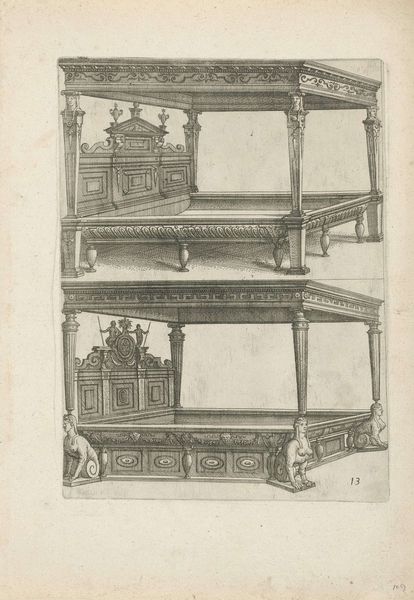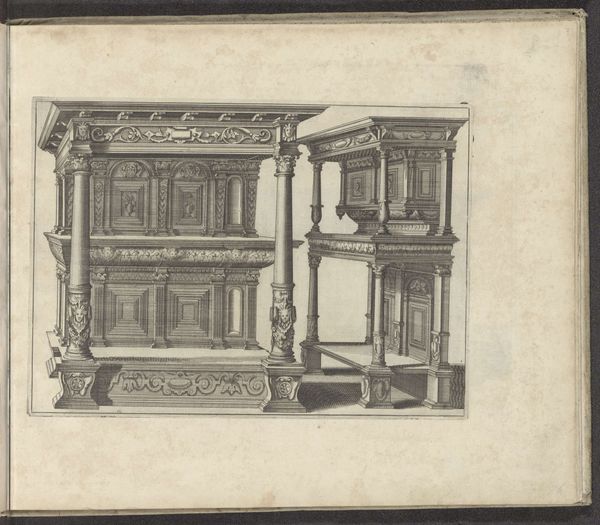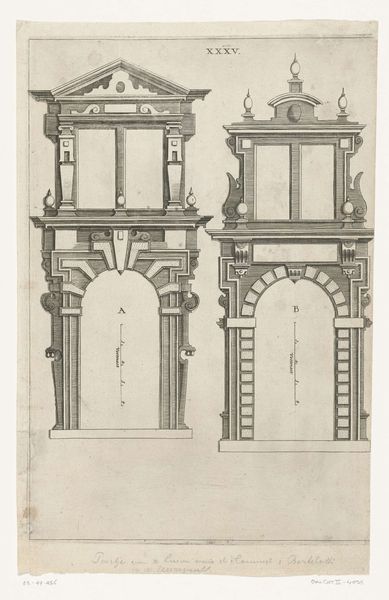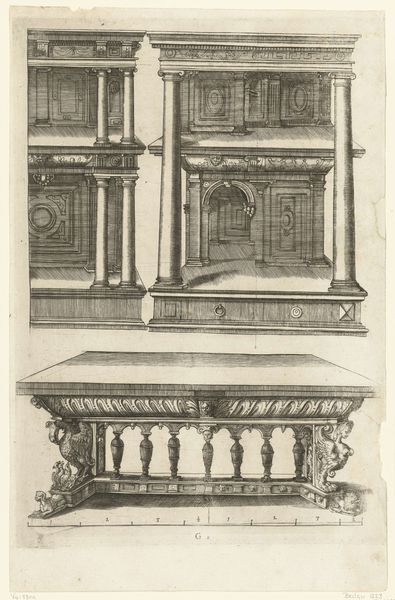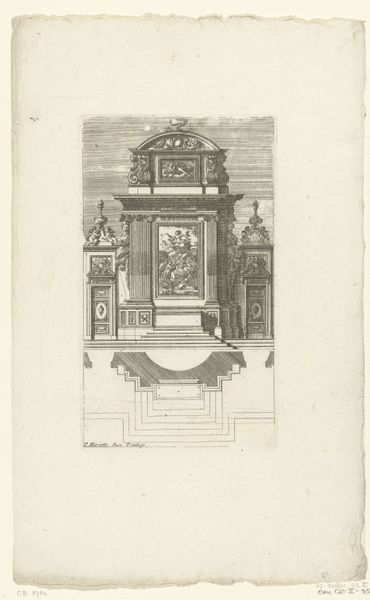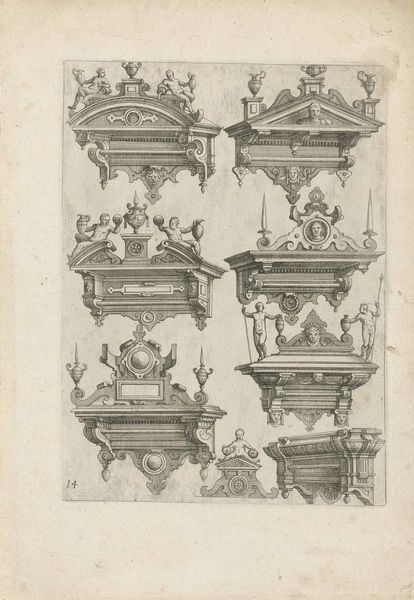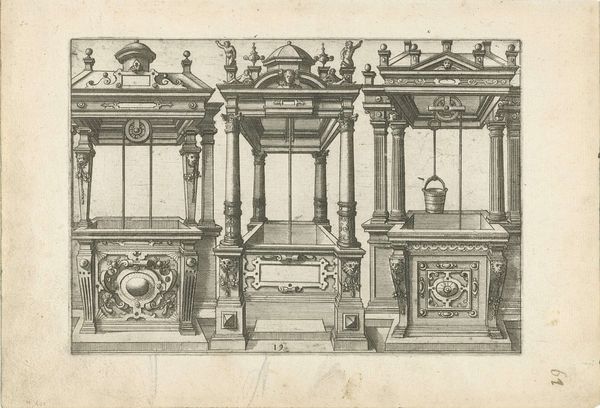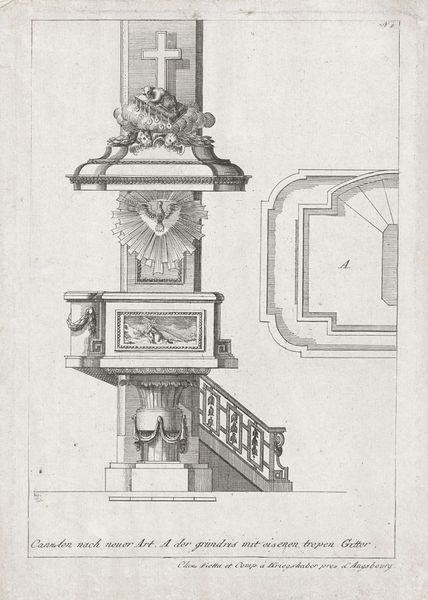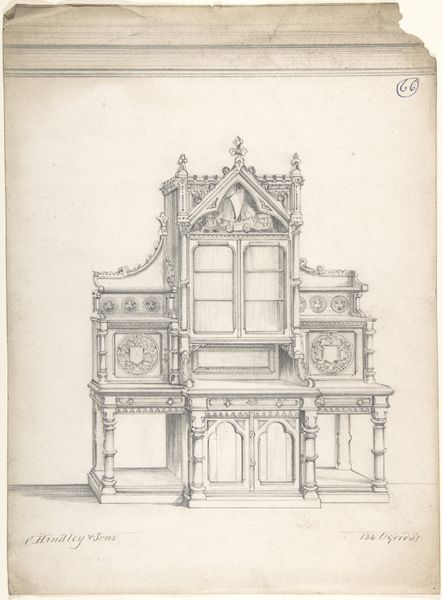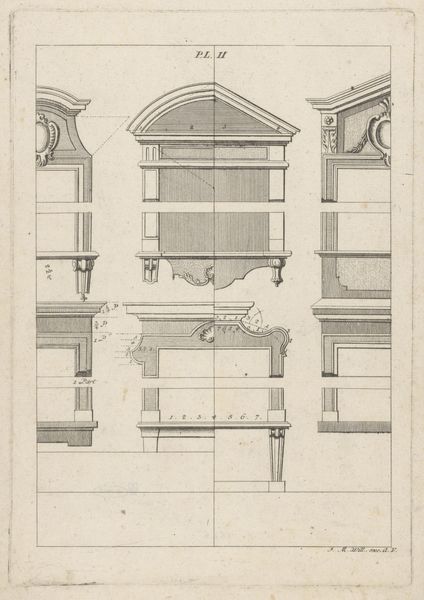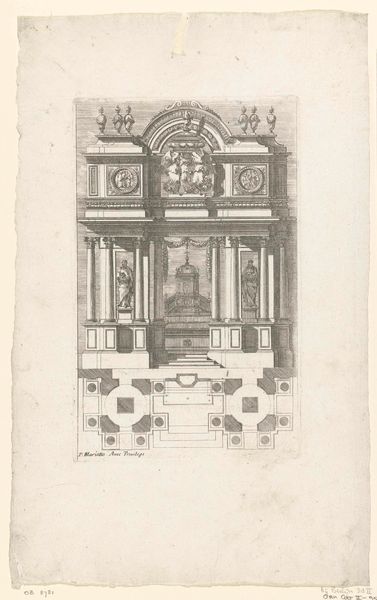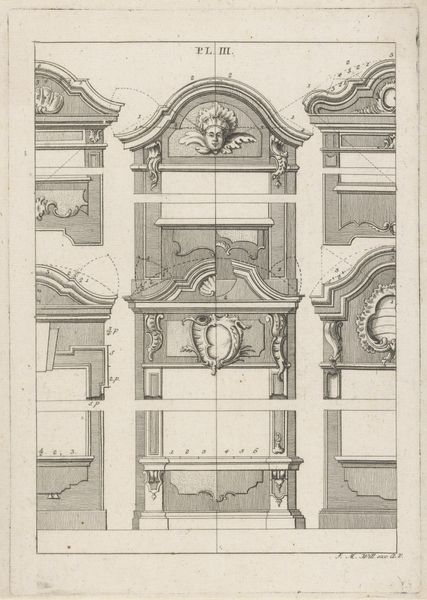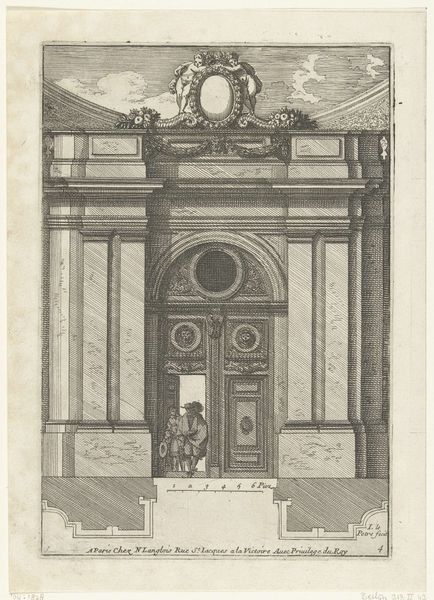
print, engraving, architecture
# print
#
11_renaissance
#
engraving
#
architecture
Dimensions: height 260 mm, width 190 mm
Copyright: Rijks Museum: Open Domain
Curator: Here we have a fascinating engraving by Pieter van der Borcht the Elder, created around 1583. The work, titled "Twee hemelbedden," presents two distinct designs for canopy beds. Editor: The beds seem grand, though static. Even in engraving, one can sense the weight of those columns, the heaviness of the ornamented headboards. Almost oppressive, despite the decorative elements. Curator: Indeed, the weight you perceive stems, I think, from the composition. The verticality of the columns against the horizontal emphasis of the base creates a powerful sense of stability, and a distinct sense of geometrical precision. Look how the negative space is carefully balanced within each design! Editor: For me, it's all about the iconography of rest and status. A bed has always been a loaded symbol, right? Birth, death, love, secrets. These beds, elevated and enclosed, suggest a safe remove from the world, and speak volumes about the owner’s social standing and aspirations to permanence. Curator: Interesting observation. But what truly captivates me are the proportional relationships at play here. The careful calibration of architectural forms allows for a structural harmony where no one element overpowers the others. It's a dance of visual weights. Editor: I'm drawn to the ways that status is communicated – that top-heavy crown motif adorning the headboards speaks directly of wealth, power, privilege, a miniature assertion of personal sovereignty acted out within the bedchamber itself. I wonder about dreams taking place within those wooden cathedrals! Curator: An excellent point. Perhaps a dialogue could begin on those levels within one's psyche during such rest and contemplation. Van der Borcht's deliberate compositions and formal rendering create much more than simple architectural designs. Editor: Exactly, and I'm left contemplating all those intricate symbols silently shaping one's sense of self. Perhaps the opulence is a symbol of power and status, but they could be read as ornate cages that are symbols of domestic life. Thank you, Pieter van der Borcht, for presenting those thoughts in material form!
Comments
No comments
Be the first to comment and join the conversation on the ultimate creative platform.
